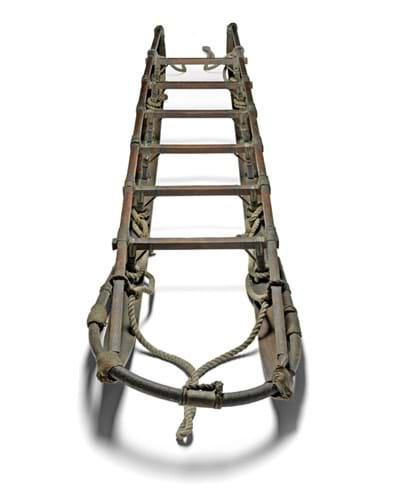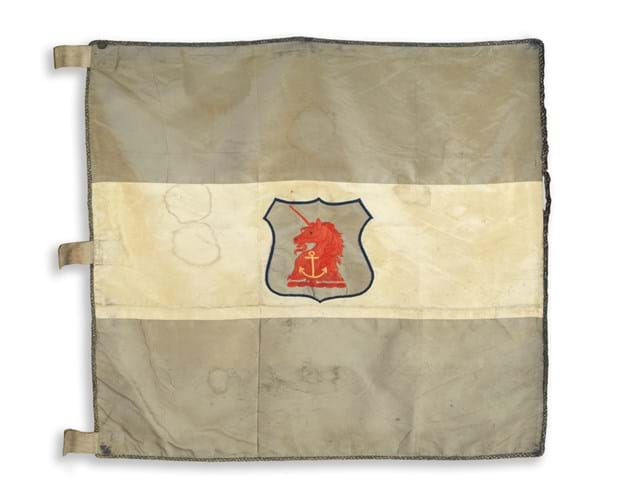Arts minister Helen Whately has temporarily prevented the issuing of an export licence to the overseas owner who bought them at a Bonhams auction in February 2019.
The government hopes £236,250 (the hammer prices plus fees and VAT) can be raised to keep them in the UK.
The sledge and flag had been owned by Monkton Combe School, the alma mater of Eric Marshall (1879-1963) who was the expedition ship Nimrod’s surgeon, cartographer and photographer. Marshall, a medic, rower and rugby player, met Shackleton (1874-1922) at a party in 1906, and volunteered for the expedition on the spot.
The expedition, also known as Nimrod, was the first led by Shackleton who led three expeditions to the Antarctic in the early 20th century, this one with the intention of being the first to the South Pole.
During Nimrod, Shackleton chose three other men from the group – Frank Wild, Eric Marshall and Jameson Adams – to make the attempt on the pole. The sledge and the flag were hauled, first by pony and then by the men, to within 97.5 miles of their objective, before turning back to Discovery Point in 1909.
This sledge was one of four used to carry the supplies and equipment the team needed to survive in the extreme conditions. This expedition was the greatest advance to the pole in history until Amundsen and Scott reached the South Pole separately three years later in 1912.
A number of other Nimrod sledges are known, including seven in The Museum of New Zealand that were brought to New Zealand in 1917.
The Reviewing Committee on the Export of Works of Art and Objects of Cultural Interest (RCEWA) recommended it be temporarily blocked from export on the grounds of the items outstanding significance for the study of polar exploration and Ernest Shackleton’s Nimrod expedition.
Sir Hayden Phillips, the chairman of the RCEWA, said: “It may be said that this expedition was a heroic failure but it went further south towards the pole than ever before and blazed the trail which Scott and Amundsen were to follow. The story behind these objects is a riveting saga. Generations to come will be prompted to discover it if the sledge and the flag can be on public display in this country. We need to keep them.”
The decision on the export licence application for the items will be deferred until May 6 and could be extended until August.







